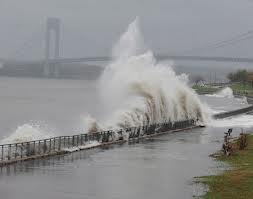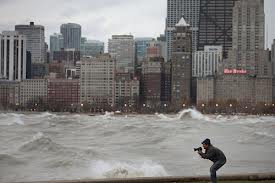Resurgent Mold Litigation In Sandy’s Wake
December 1, 2012
News and Views on Environmental & Toxic Tort Federal and State Legal Issues and Developments
December 1, 2012
 There is a significant risk that there will be a resurgence of mold claims and mold litigation in the wake of Hurricane Sandy. Sandy left behind thousands of homes and offices in New York and New Jersey with flood-soaked flooring and sheet rock and water-damaged carpeting and personal belongings, which are all potential sources of mold if not removed and replaced. In addition to potential mold exposure to property owners and lessees, there is the potential occupational risk to the thousands of workers in the construction trades who are working to repair damaged homes and offices.
There is a significant risk that there will be a resurgence of mold claims and mold litigation in the wake of Hurricane Sandy. Sandy left behind thousands of homes and offices in New York and New Jersey with flood-soaked flooring and sheet rock and water-damaged carpeting and personal belongings, which are all potential sources of mold if not removed and replaced. In addition to potential mold exposure to property owners and lessees, there is the potential occupational risk to the thousands of workers in the construction trades who are working to repair damaged homes and offices.
The most likely source of mold-related claims, however, will arise over disagreement concerning the scope of work of remediation contractors, construction companies and others involved in returning storm-ravaged communities to some semblance of normality. The contractor who replaces ruined sheet rock walls or wooden flooring, for example, may not be thinking about the water-soaked floor joists that may be a breeding ground for mold. The contractor who rebuilds an HVAC system may not feel responsible for sources of mold that may be spreading via that system.
Although certain affected surfaces may appear to recovered after being submerged under storm water for days, those surfaces may in fact be a breeding ground for mold. A service such as mold remediation cleveland can be necessary to inspect and ensure the removal of any trace of mold. As much as possible, a building contractor should clarify with the client  in writing what responsibility, if any, the building contractor has for addressing mold conditions, particularly those conditions that may be adjacent to area of new construction.
in writing what responsibility, if any, the building contractor has for addressing mold conditions, particularly those conditions that may be adjacent to area of new construction.
On November 30, 2012, WNYC broadcast a highly informative program on the Leonard Lopate Show titled, “Mold: Please Explain“, which can be downloaded from WNYC’s website. The guests on the program were Monona Rossol, an expert in environmental health and industrial hygeine, and Chin Yang, a microbiologist with Prestige EnviroMicrobiology. Ms. Rossol and Mr. Chin discussed what mold is, where it comes from, how it grows, what it can do to your home and health, and how to get rid of it. The listener Q&A following the initial presentation made clear that there are widespread misperceptions about mold and how to address it.
Thankfully, there are many publicly available websites that provide first-rate information concerning mold hazards and how to address it. These sources should be the first place anyone with a mold concern should look for answers. They are also excellent sources of information for toxic tort practitioners defending mold cases, who need to identify relevant regulations and standards of practice in the industry. These sources also provide valuable insights into how to protect human health during the restoration process.
These sources, most of which are provided on the WNYC website, include NYC’s excellent site at: The NYC Department of Health and Mental Hygiene; EPA’s “Mold Regulation in Schools and Commercial Buildings“, EPA’s “A Brief Guide to Mold, Moisture, and Your Home“, “Flood Cleanup: Avoiding Indoor Air Quality Problems” and “The Inside Story: A Guide to Indoor Air Quality” “An Introduction to Indoor Air Quality“, FEMA’s “Dealing With Mold and MIldew in Your Floor Damaged Home” and “Eradicating Mold and Mildew” HUD’s “Healthy Homes Programs Resources” and Disaster Recovery: Mold Removal Guidelines for Your Flooded Home” and lastly, the “Guidance for Clinicians on the Recognition and Management of Health Effects related to Mold Exposure and Moisture Indoors“, published by the University of Connecticut Health Center, Division of Occupational and Environmental Medicine, Center for Indoor Environments and Health.
There is no dearth of strong science-based resources concerning mold and mold rememdiation on the internet. Unfortunately, these resources are often consulted only after some ill-advised action is taken with regard to a mold concern, not before.